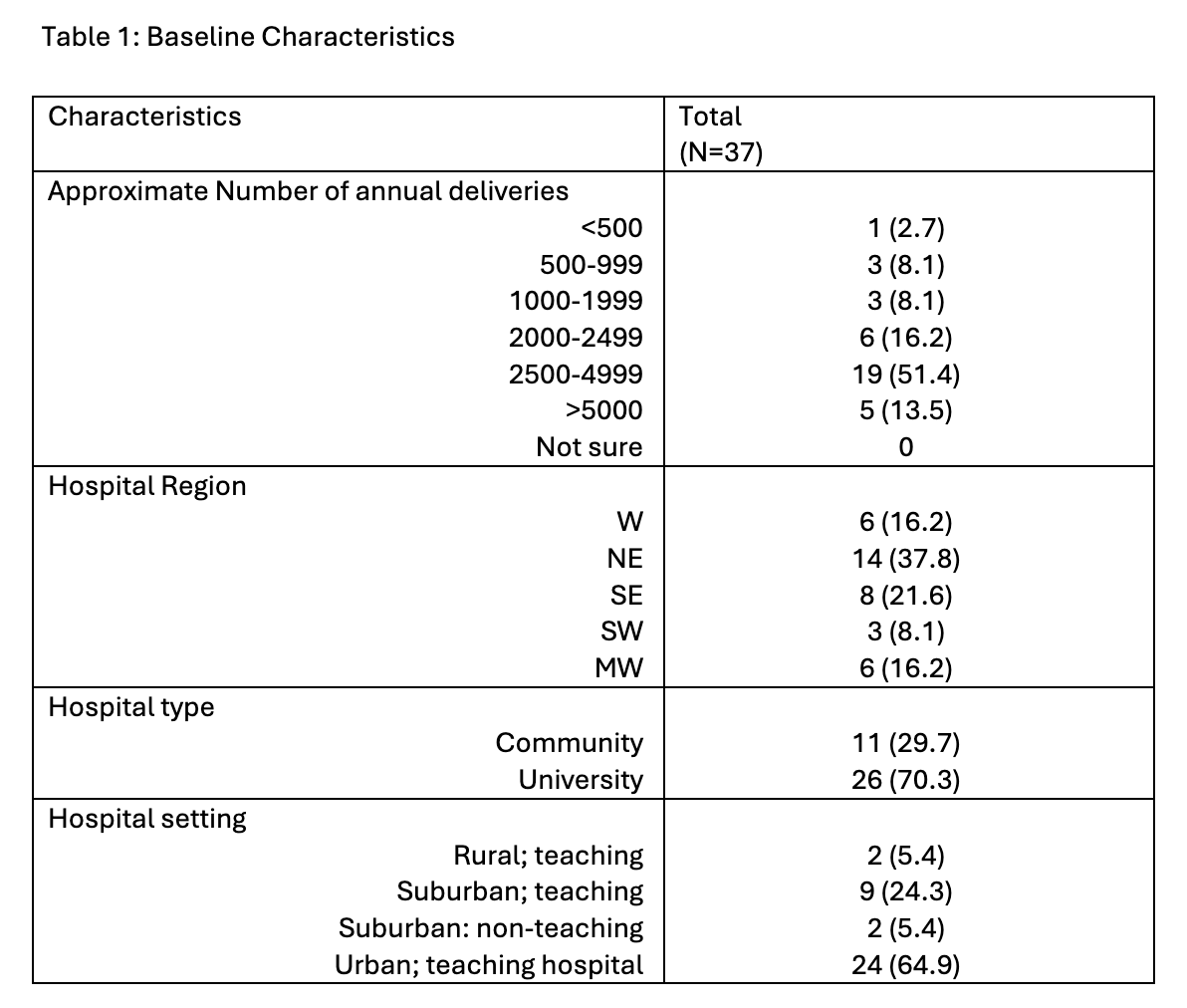Newborn Care 1
Session: Newborn Care 1
250 - Screening for Unmet Social Needs in Newborn Units
Sunday, April 27, 2025
8:30am - 10:45am HST
Publication Number: 250.6373
Mark A. Vining, UMass Chan Medical School, Worcester, MA, United States; Annelise Brochier, Johns Hopkins Bloomberg School of Public Health, Baltimore, MD, United States; Katherine Barahona Paz, Boston Children's Hospital, Cambridge, MA, United States; Prarthana Pilla, University of Massachusetts Medical School, Houston, TX, United States; Sage A. Herbert, Boston University School of Public Health, Brookline, MA, United States; Esther K. Chung, University of Washington School of Medicine, Seattle, WA, United States; Valerie Flaherman, University of California, San Francisco, School of Medicine, San Francisco, CA, United States; Neera Goyal, Nemours Children’s Health, Philadelphia, PA, United States; Jayme Congdon, University of California, San Francisco, School of Medicine, San Francisco, CA, United States; Hollyce Tyrrell, Academic Pediatric Association, McLean, VA, United States; Avery Ulrich, Academic Pediatric Association, McLean, VA, United States; Arvin Garg, UMass Memorial Children's Medical Center, Worcester, MA, United States

Mark A. Vining, MD (he/him/his)
Pediatrician
UMass Chan Medical School
Worcester, Massachusetts, United States
Presenting Author(s)
Background: Screening of social drivers of health (SDOH) and referral to resources have become standard of care in many outpatient settings. Screening is increasingly being implemented in inpatient units as well. The newborn period can bring unique stresses including straining existing resources and emergence of new financial challenges. Identifying unmet social needs during the birth hospitalization has not been previously investigated in the scientific literature.
Objective: To describe how newborn units screen for unmet social needs, and to assess provider perceptions regarding the importance of screening, social needs assessed, and whether formal SDOH screening tools are well suited to newborn units.
Design/Methods: We invited clinician representatives from each site in the Academic Pediatric Association’s Better Outcomes through Research for Newborns (APA BORN) Network to complete an electronic survey between August and November 2023. The survey queried existing practices in newborn units, provider opinions concerning the importance of SDOH screening during the birth hospitalization, the elements most important to include in a tool, and interest in using a screening tool specific to newborn units. The survey asked about the following nine SDOH categories consisting of 19 elements: Care needs, Food insecurity, Healthcare access, Infant needs, Legal needs, Parental factors, Transportation needs, and Utilities. Descriptive statistics were used for the analysis.
Results: Results
Approximately 30% (37/130) of BORN sites from 24 states completed the survey (Table 1). The large majority responded “Always" or "Almost Always" to screening for car seat (92%) and feeding (83%) needs, (components of "infant needs" category, Table 2). In contrast to the high proportion screening for “Infant Needs,” most respondents reported they "never" or "almost never" screened for the other 8 SDOH categories. Only two respondents (5%) indicated use of a formal screening tool, although 91% indicated interest in using a formal tool. The top five elements to include on a screening tool reported were: housing insecurity/instability (94%), food insecurity (87%), infant supplies (87%), transportation barriers to appointments (84%) and car seat access (71%). 82% of respondents answered "Agree" or "Strongly Agree" when asked if it is feasible to screen for social needs during the nursery stay.
Conclusion(s): Our findings suggest that SDOH screening in newborn units is not current standard of care, but nonetheless, there is great enthusiasm to devise a screening tool to address basic family and infant needs in this unique pediatric clinical setting.
Table 1

Table 2: Current Practices Related to Screening for Social Needs at Participating Newborn Units (N=37)
.png) SDOH=social determinants/drivers of health; *Ranges represent the collapsed survey elements in 9 SDOH categories.
SDOH=social determinants/drivers of health; *Ranges represent the collapsed survey elements in 9 SDOH categories.
